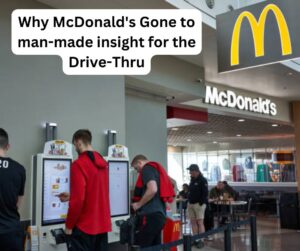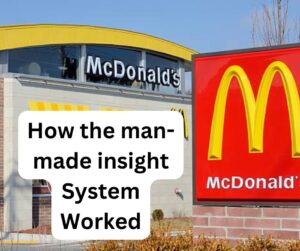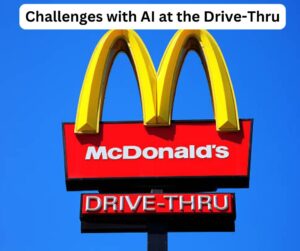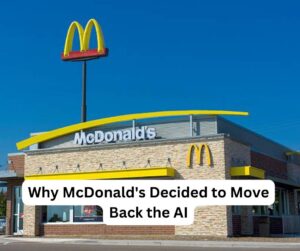
5 Things to Know about the Rising and Fall of PC based insight at the McDonald’s Drive-Thru
Mcdonald’s, the modest food beast, has perpetually been at the actual front of improvement, and two or three years earlier, they went to mechanized thinking (mimicked insight) to additionally foster their drive-through experience.
The goal was fundamental: speed up organization, make demand taking more exact, and make a smoother experience for clients.
1. Why McDonald’s Gone to man-made insight for the Drive-Thru

McDonald’s decided to include reproduced knowledge in their drive-through diners to make things faster and more useful.
The idea was that a mimicked knowledge system could take orders from clients, especially like an individual does, but with more consistency.
– Speeding up the Process:
The goal was to diminish stand by times, especially during involved hours.
By means of modernizing demand taking, McDonald’s needed to serve more clients fundamentally speedier, inciting higher arrangements and more upbeat clients.
2. How the man-made insight System Worked

The man-made knowledge in the drive-through resembled a voice partner like Alexa or Siri.
Clients would get up to the drive-through speaker, and actually of a human voice, they would hear the man-made knowledge’s voice mentioning their solicitation.
– Getting a handle on Client Orders:
The reenacted insight used standard language taking care of (NLP) to fathom what clients were referring to.
This advancement allowed it to see different accents, articulations, and assortments of how people could present their solicitations.
3. Challenges with AI at the Drive-Thru

But the idea sounded great, McDonald’s stood up to a couple of hardships with the reenacted insight system before long.
Coincidentally, taking solicitations isn’t as straightforward for man-made insight as apparently.
– Inconvenience Sorting out Accents:
One of the most disturbing issues was that the man-made knowledge now and again endeavored to get a handle on different accents and business related conversation.
For example, someone mentioning a “Coke” with a significant feature presumably will not be seen precisely by the PC based insight, inciting disappointment.
– Tangled Orders:
Reasonable food clients regularly change their orders, for example, mentioning “no pickles” or “extra ketchup.”
The recreated insight a portion of the time got confused with these uncommon sales, inciting bungles that should be modified by a human laborer in any event.
4. Why McDonald’s Decided to Move Back the AI

Directly following testing mimicked knowledge in the drive-through at a couple of regions, McDonald’s reasoned that overriding human solicitation takers wasn’t precisely ready.
They chose to move back the PC based knowledge structures and rely more upon human staff again.
– Staying aware of Client Satisfaction:
Buyer dependability is key for any drive-through restaurant.
Right when the recreated insight committed mistakes, it toned down the help rather than speeding it up, which upset clients.
McDonald’s perceived that it was more astute to keep their clients merry by using human staff who could quickly adjust to any situation.
– Man-made reasoning Isn’t One-Size-Fits-All:
While PC based knowledge is solid, it’s not commonly the right response for each issue.
McDonald’s found that a couple of tasks, for example, dealing with the various assortments in client orders, are still better wrapped up by individuals.
This doesn’t suggest that man-made insight won’t work from here on out, but it necessities to improve before it can manage the complexities of a drive-through.
5. What This Means for the Future of AI in Fast Food

In spite of the way that McDonald’s scaled back its usage of recreated knowledge in pass through diners, the preliminary is certainly not a complete dissatisfaction.
It gives critical guides to other modest orders of things and tech associations wanting to organize man-made knowledge into client help.
– A Learning Opportunity:
McDonald’s presently has a prevalent cognizance of what man-made reasoning ought to or shouldn’t do in a certified setting.
The contribution from this preliminary can help with additional creating future PC based insight systems that might be more fit for getting a handle on complex orders and acclimating to different accents.
– Man-made knowledge Could Get back with Improvements:
This isn’t the end for man-made insight at Mcdonald’s.
Yet again as man-made insight advancement improves, McDonald’s solidarity endeavor with a further evolved system that can determine the issues they encountered.
Future computerized reasoning could use more present day tongue models that are better at understanding client needs.

Your ability to distill complex concepts into digestible nuggets of wisdom is truly remarkable. I always come away from your blog feeling enlightened and inspired. Keep up the phenomenal work!